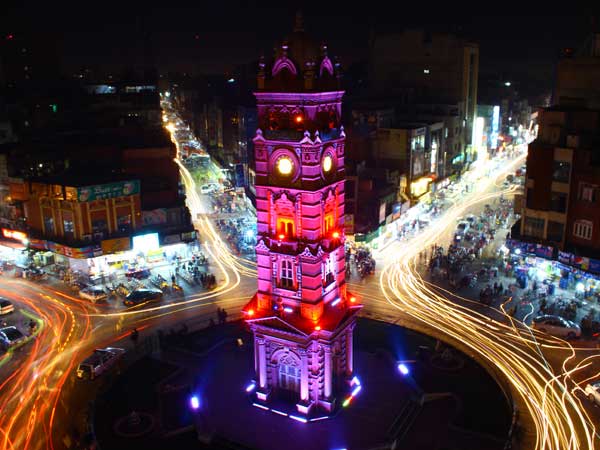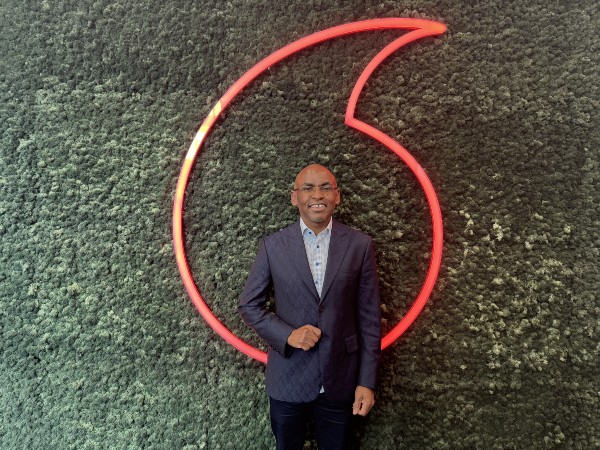Next month marks Safaricom’s 25th anniversary. CEO Peter Ndegwa (pictured) was in London to reflect on the operator’s journey - from a subsidiary of Telkom Kenya to becoming the country’s largest and most valuable enterprise.
Speaking to Developing Telecoms at Vodafone UK’s headquarters, Ndegwa looked back fondly on his five years in charge, highlighting Safaricom’s milestones and its plans for future growth.
Before joining Safaricom, Ndegwa spent 15 years in the food and drinks industry, holding senior roles at Diageo and overseeing iconic brands such as Guinness. He swapped marketing campaigns about not splitting the ‘G’ in a pint for driving Safaricom to record achievements. This year alone, the company surpassed US$3 billion in revenue, delivered US$1.2 billion in operating profit, and celebrated passing 50 million customers in Kenya.
Today, Safaricom’s mobile network covers 95% of the population, with 36 million monthly users on its M-Pesa mobile money platform.
Mobile momentum
Despite its dominance, Ndegwa believes there is “a lot of headroom to grow” both in Kenya and in its new market, Ethiopia.
In Kenya, only about half of customers own 4G or 5G devices. As across Africa, device affordability is the main barrier. Industry experts often point to local smartphone manufacturing as a solution. Governments are urged to offer tax breaks and incentives to vendors to reduce tariffs and lower prices for consumers.
Safaricom has taken matters into its own hands with the ‘Neon’ line of locally manufactured smartphones. Since 2023, devices have been produced by East African Device Assembly Kenya (EADAK), a joint venture with Jamii Telecommunications, Shenzhen TeleOne Technology, and the Industrial Technology Trading Company.
Ndegwa said 4G uptake is rising by 20-30% annually, with 23 million 4G devices now active on the network, out of 50 million. “Mobile is not declining yet - we’re even still growing in voice. There’s still more opportunity to grow - we’ve reduced price and we’re creating more affordability,” he said.
Safaricom also sees potential in broadband. The company currently connects fewer than half a million premises, with around 2 million more to reach by fibre or satellite. It has already deployed 18,300km of optic fibre.
Meanwhile, 5G adoption is in its early stages. Only a third of Safaricom’s infrastructure currently supports 5G, but Ndegwa aims to make all sites 5G-ready by 2029. As of March 2025, the company had 1.1 million 5G customers.
“The core of our growth will eventually slow down,” admitted Ndegwa - a trend seen in mature telecom markets worldwide. That was one reason Safaricom seized the chance to expand into Ethiopia.
Betting big on Ethiopia
Safaricom secured its Ethiopian mobile licence in 2021 and now has 10 million customers and 3,000 mobile sites - just half the number it operates in Kenya. Ndegwa said this underlines confidence in Safaricom’s bet on Africa’s newest liberalised telecoms market.
As expected, the new venture is loss-making in its early years. The company posted a negative EBIT of KES61.1 billion.
Ndegwa attributed this to two main factors: heavy start-up capex and Ethiopia’s turbulent currency reform, which halved the value of the birr in 2024. The government introduced the reform to tackle forex shortages, macroeconomic imbalances, and an overvalued exchange rate.
Despite the hit, Safaricom has pledged to shareholders it will break even in EBIT by 2027. Ndegwa expressed confidence in this target as Ethiopia stabilises and the government levels the playing field with state-owned Ethio Telecom, including offering tax breaks on equipment imports.
With a population of 125 million, Ethiopia offers vast potential. “In Ethiopia we’ve reached 10 million customers in three years. It took eight years to achieve that milestone in Kenya. That shows the importance of scale,” said Ndegwa.
At entry, Ethiopia’s mobile penetration was around 50%, with only 60 million active customers. “There’s still a lot of headroom to grow,” he said. Safaricom is targeting 15 million subscribers by the end of the year, with ambitions to reach nearly 50 million within a decade.
Ndegwa was bullish, pointing to the strength of the Kenyan business in supporting expansion. EBIT in Kenya rose 13% year-on-year to KES158 billion (US$1.2 billion). Safaricom has so far invested US$2.5 billion into Ethiopia for licensing and loans, most of which has already been repaid. “The group generates a lot of cash,” Ndegwa noted.
“When our Ethiopian operation becomes a growth driver, we expect double-digit growth in both top and bottom line, because Ethiopia has the scale to deliver over time,” he said.
Looking ahead
Safaricom Kenya remains the group’s cash cow, though recent comments from a government minister calling for the breakup of its core units raised concerns. Ndegwa dismissed the idea, saying there is no visible benefit in such a drastic move.
As Safaricom celebrates its silver jubilee, it remains Kenya’s largest enterprise, briefly touching US$3 billion in market capitalisation. Despite the financial drag from Ethiopia, the company has the scale and strategy to replicate its growth model in new markets.
Ndegwa credits Safaricom’s success to its mission of improving everyday life for Africans. “The financial benefits we’ve gained came from our purpose. We started with purpose, then customer focus, and then pushed innovation. We are doing the right things, driven by our desire to create impact,” he concluded.























